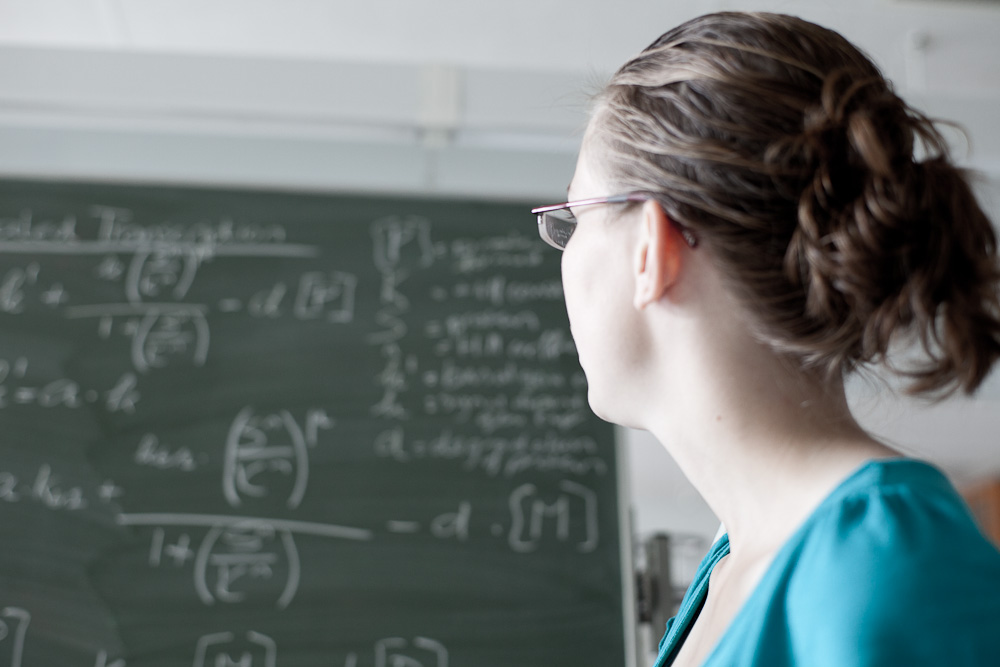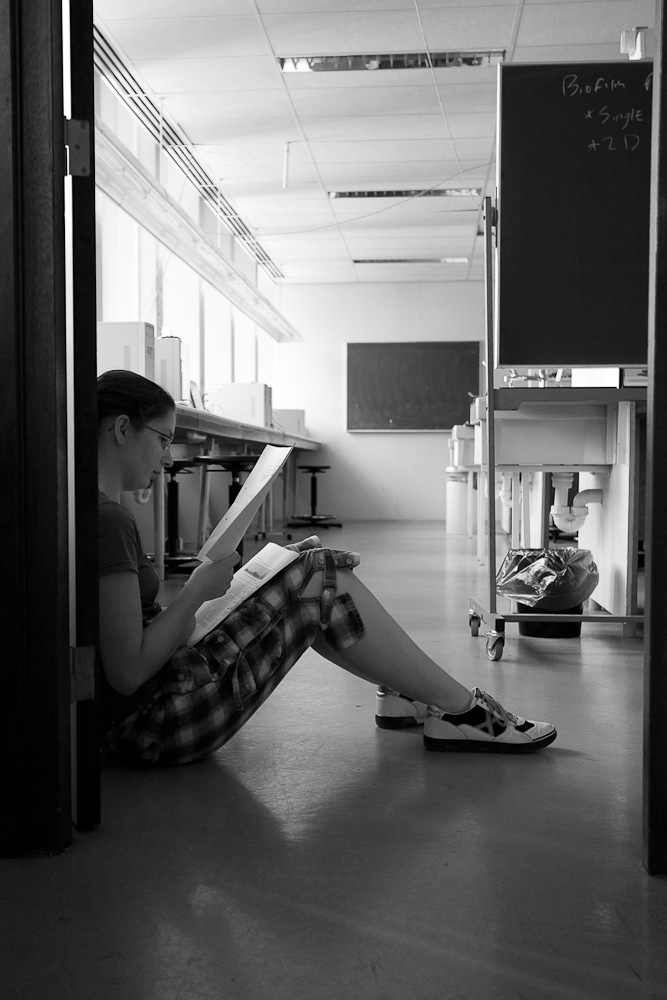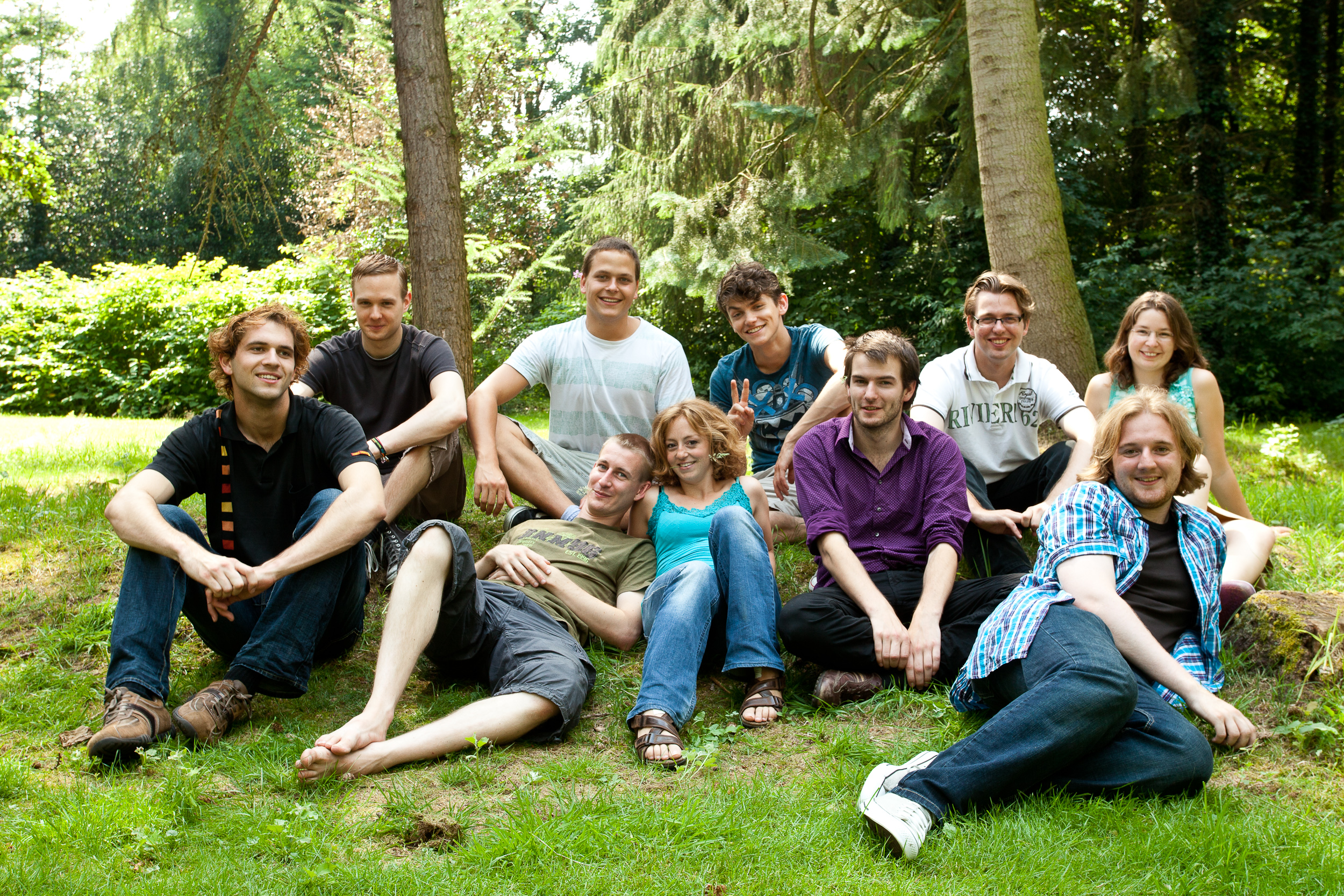Team:Groningen
From 2010.igem.org
- Home
- Project Overview | Biofilm | Chaplins | Expression | Applications | Biobricks
- Modeling Overview | Biofilm dynamics | Expression | Kill Switch | Information standard
- Human Practices Overview | Education | Safety | Survey | Ethics | For Parents
- Organization Overview | Brainstorm | Flow Chart | Protocols | Notebook
- Team Overview | Members | Collaboration | Image of Science | Contact
- Judging
-
Welcome to iGEM Groningen!
-
Self assembling hydrophobic biofilm
-
The Image of Science
-
Modeling
Modeling
Modeling in iGEM
Together with the rise of synthetic biology, more and more computational tools and methods to improve and model biological systems were developed. Biological systems are often very complicated networks and it can be hard to study their behaviour without the help of computers. This is why mathematical descriptions of biochemical processes have become an important way of studying biological systems aside from wetwork. Computer simulations can for example predict system behaviour or screen for possible drug targets. Models can also show were the gaps in our understanding of a biological system are, because they might show that the assumed mechanism is not right.
In synthetic biology, modelling is important because it can save time and money and improve the final product. Mathematical models do have to be validated by comparing experimental and simulation results, this is why models have become a tool for use in parallel with experimental approaches. However, modeling in synthetic biology is an interdisciplinary task, because one needs to understand both the biology of the systems which will be modeled and posess the mathematical knowledge needed to build the model. Therefore, modelling is a collaborative effort of different fields of science.
Our modeling goals
When it became clear that our project involved biofilms, we looked into models that describe biofilm formation. We found that such models existed and visited an expert on biofilm models in Delft. After this visit, it became clear that although these models are pretty mathematical, we could make a simple model with biofilm formation and diffusion.
We modeled gene expression of our hydrofobic proteins. The modelers were actually the ones who discovered the qurom sensing pathway used in our project when looking in the partsregistry. The Com XPA system has since then been studied and we found that the biological pathways involved are far more complex than our model could describe. We therefore chose to model how the ComXPA system could activate the expression of our proteins.
We also looked into killswitch mechanisms because the applications of our biofilm in for example anti-fouling coatings are outside the lab. Since most GMO's are not allowed to leave the lab alive, it would be nice to kill our bacteria after they formed a biofilm with our hydrofobic proteins. Therefore we modeled a simple toxin anti-toxin killswitch mechanism.
Finally we wrote an information standard which hopefully provides more and easier searchable information for the partsregistry.
References
Lukas Endler, Nicolas Rodriguez, Nick Juty, Vijayalakshmi Chelliah, Camille Laibe, Chen Li and Nicolas Le Novère, Designing and encoding models for synthetic biology, Journal of the Royal Society Interface, 2009, online April 1, http://rsif.royalsocietypublishing.org/content/early/2009/03/27/rsif.2009.0035.focus.full. Yiannis N Kaznessis, Models for synthetic biology, BMC Systems Biology 2007, 1:47, http://www.biomedcentral.com/1752-0509/1/47.
-
Our Team
== Team ==(f.l.t.r: Ramon, Arend Jan, Peter, Jorrit, Geeske, Maarten, David, Arend, Djoke, Joël)
Go check out the members of our team, with whom we collaborated or our publicly available pictures! If you still have questions you can always contact us!
Our advisors
- prof. dr. Oscar Kuipers: [http://molgen.biol.rug.nl/molgen/index.php Molecular Genetics] (Head)
- dr. Dennis Claessen: [http://www.rug.nl/staff/d.claessen/index Microbial Physiology]
- prof. dr. Jan Kok: [http://molgen.biol.rug.nl/molgen/index.php Molecular Genetics]
- prof. dr. Bert Poolman: Biochemistry; [http://www.centreforsyntheticbiology.eu/ Centre for Synthetic Biology] (Director)
- prof. dr. Roel Bovenberg: Synthetic biology and Cell engineering; Corporate Scientist Biotechnology, [http://www.dsm.com/ DSM]
-
Contact us
 "
"



